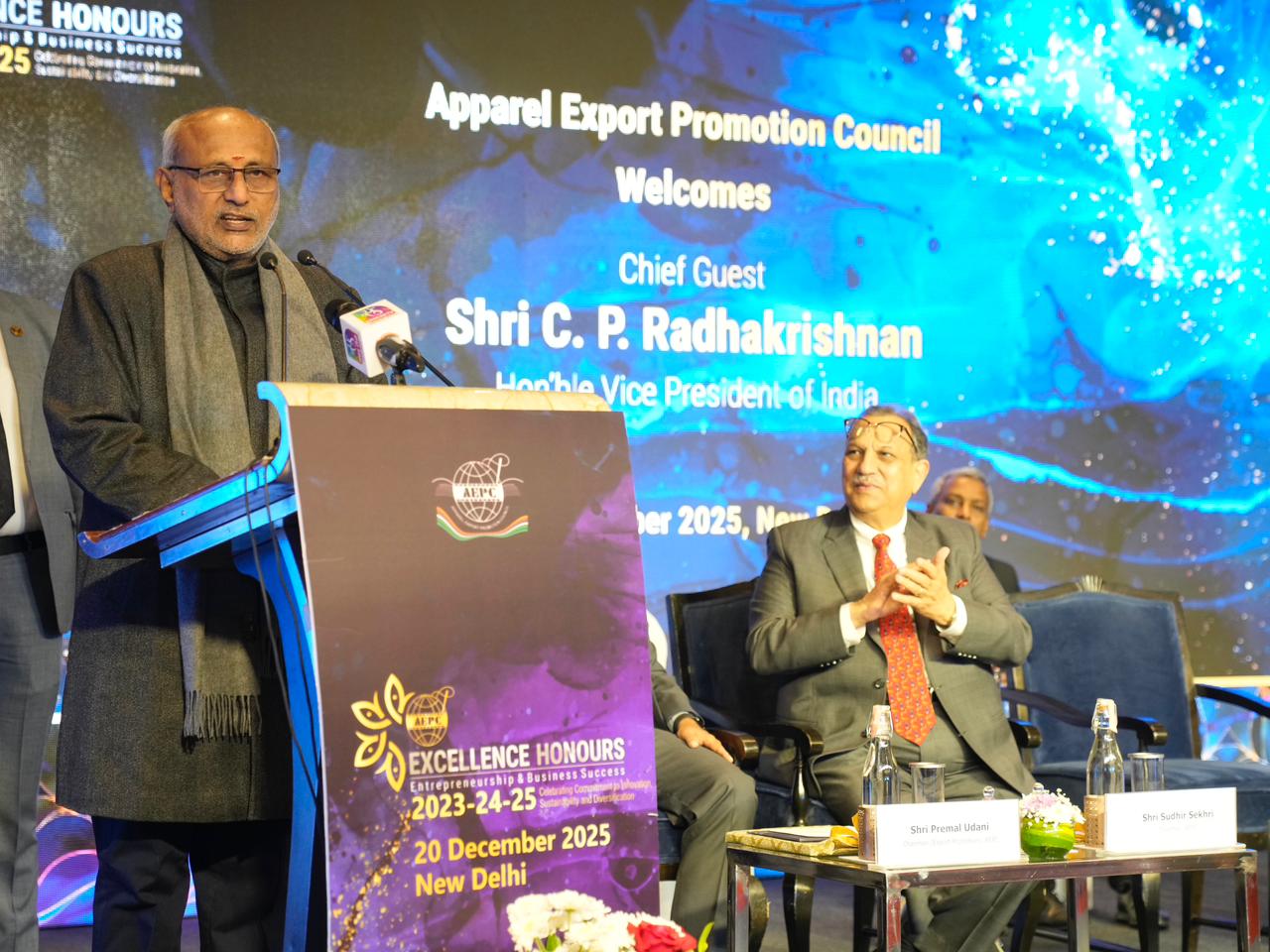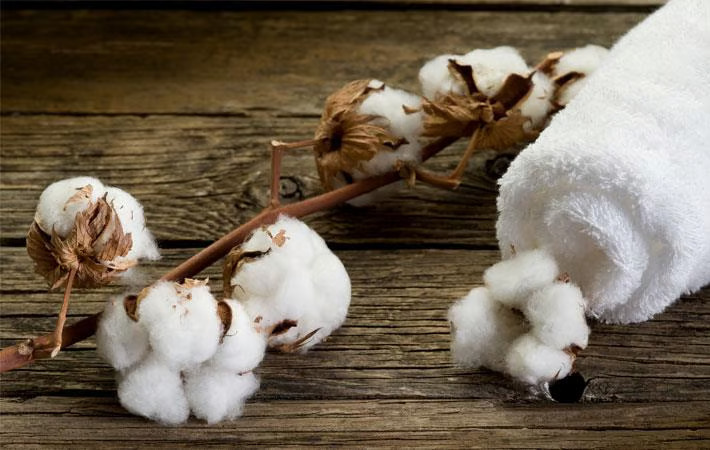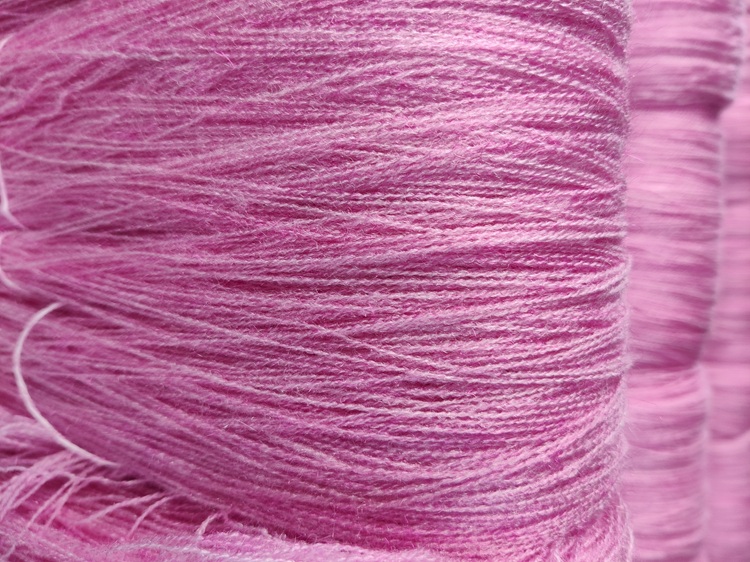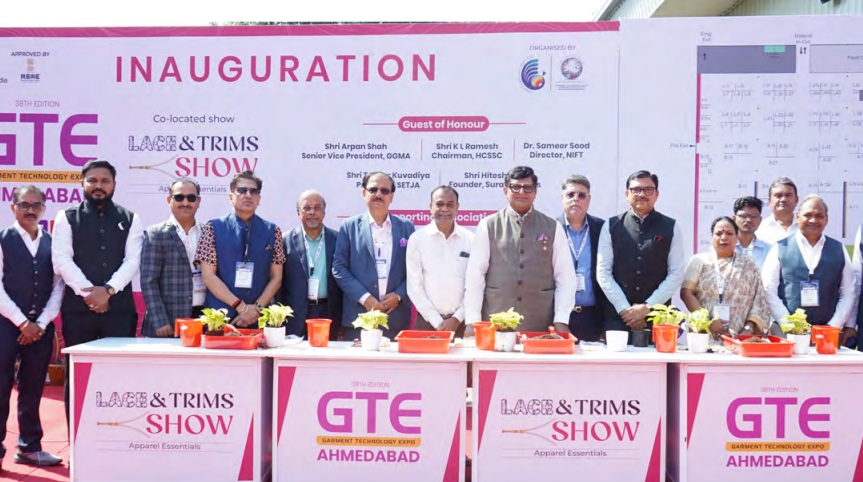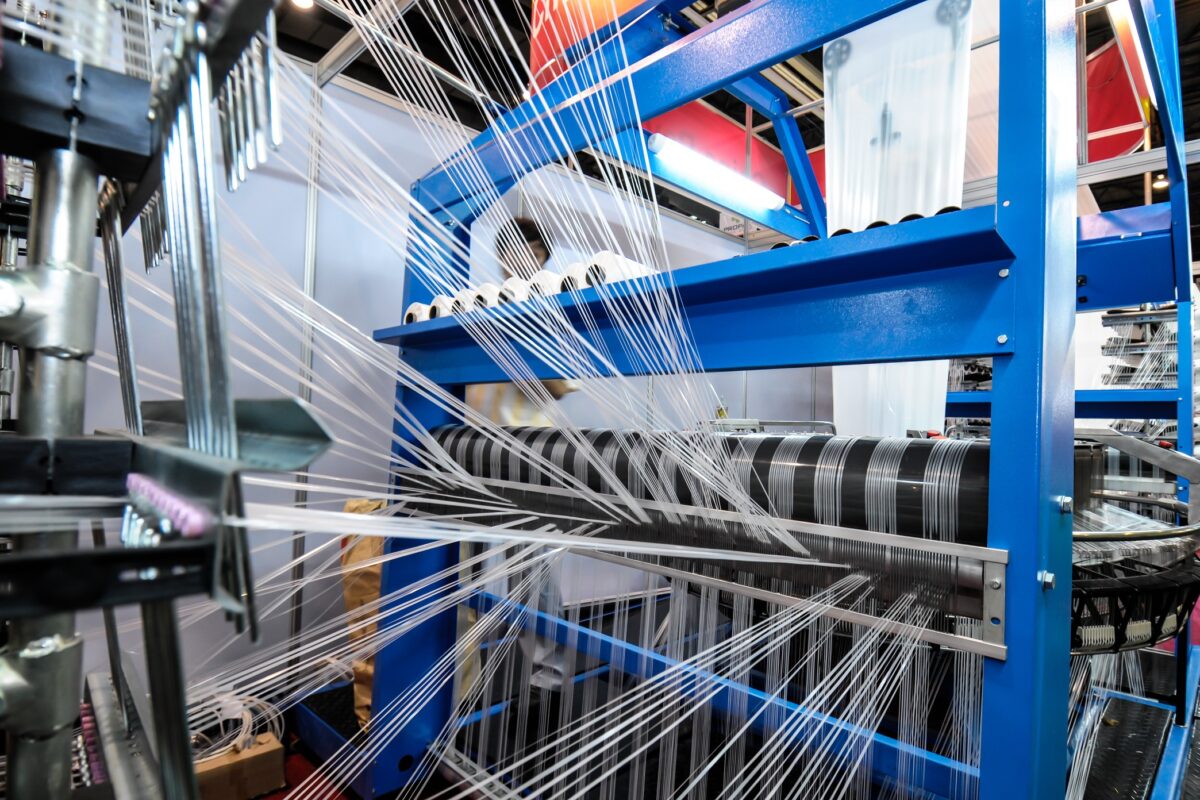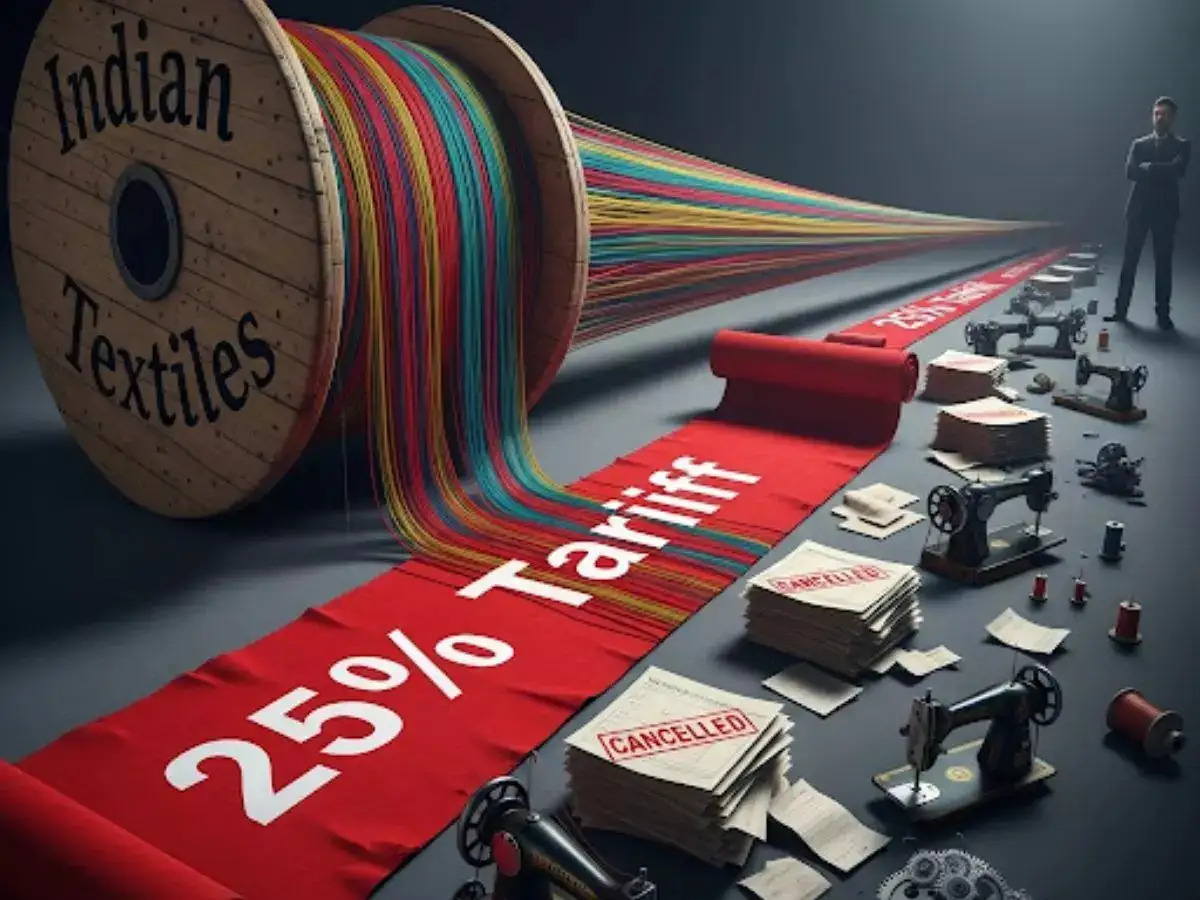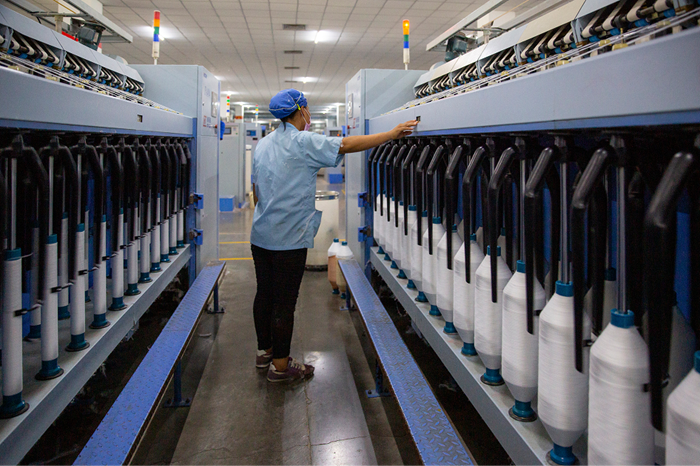FW
India’s cotton output is estimated to be 341 lakh bales for the 2015-16 season. The total output for the 2014-15 crop year stood at 382.75 lakh bales. The lower crop estimate is mainly due to crop damage in the northern region due to whitefly attack. The total crop estimated in the northern zone during the season 2015-16 is 40 lakh bales, down from 53.50 lakh bales last year.
Arrivals of cotton during the ongoing 2015-16 season continue to lag behind last year’s arrivals. Arrivals during the 2015-16 season up to the end of March 2016, which are estimated at 280.15 lakh bales, are lower by about 12 per cent than the 318.45 lakh bales that had arrived till the same period last year.
This reduction in arrivals during the ongoing cotton season is also a clear indication of a lower crop this year. Total cotton supply for the 2015-16 season is estimated at 428.60 lakh bales with domestic consumption likely to account for 305 lakh bales. That would leave a surplus of 123.60 lakh bales.
Deliveries of raw cotton to Indian mills have fallen 12 per cent this season. Cotton plays an important role in the Indian economy as the country's textile industry is predominantly cotton based. India is one of the largest producers as well as exporters of cotton yarn.
Turkey’s plan to impose anti-dumping duties on US cotton imports will drive up costs for its own textile producers, hurting the competitiveness of their exports. Turkey has decided to place a three per cent duty on US cotton imports, saying that US cotton is hurting the domestic cotton industry.
The spat is likely to put strain on trade relations between one of the world's top fiber growers and one of its biggest customers at a time of weak global prices and demand. Imports on a cost, insurance and freight basis will incur due to anti-dumping duties.
Turkey’s decision is expected to push up raw material costs of textile producers by two or three per cent and affect price competitiveness of Turkish exports. Turkey is the second biggest buyer of US cotton, with shipments ranging from 1.5 million to 2 million bales per year. Turkey exported 17 billion dollars worth of garments and ready-to-wear clothing last year and eight billion dollars worth of textiles and raw materials.
US cotton prices have been under pressure from huge global inventories as demand for manmade fibers like polyester has stolen market share. In fact the world’s cotton farmers are struggling with weak prices.
Annual clothing sales in China will grow 25 per cent in 2019 compared to 2014. Which means China will surpass the US as the world's largest apparel market by the end of the decade. Despite strengthening of Chinese currency and rising raw material and labor costs which directly impact the Chinese clothing market, China still continues to be a global leader.
Chinese e-commerce giants such as Alibaba and others will constitute up to 50 per cent of the global e-commerce market by 2018. Apparels made in China for the US export has an applied tariff rate as high as 9.63 per cent for textiles and 16.05 per cent for clothes; free trade agreements under negotiation may see that replaced by products made in Asia.
China is one of the world’s biggest apparel producers and apparel retail markets. The country’s apparel retail sales in 2013, increased 11.6 per cent from the previous year. However, the double digital growth rate was still lower than the 18 per cent year-on-year growth in 2012 and 24.2 per cent in 2011.
Household spend on clothing in China in 2013 accounted for 10.6 per cent of their total annual expenditure compared to around three per cent of household annual expenditure in the US.
Clothing and accessories fair Chic Autumn will be held in China October 11 to 13, 2016. The exhibition will take place in an area of 53,000 sq. mt. Approximately 700 exhibitors from 23 countries and 65,000 trade visitors are expected, arriving mainly from all over China and other, principally Asian, countries.
Chic will continue and strengthen the accompanying support for exhibitors such as match-making and public relations activities, as well as further network measures. Chic is considered the bridge into the Chinese consumer market. The personal, face-to-face business at the fair deepens knowledge and requirements for the entry into this market. Simultaneously the participants who are already represented in China are gradually expanding their market presence with their participation in Chic.
Chic 2016 will integrate brand and channel ecology, fully display and help garment brands find themselves in the fast-changed ecology and match and evolve with the channel ecology swiftly. The show will extend the information of distributors, agents and franchisees, optimize the resources of department stores and shopping centers, mine e-business platforms, buyers and multi-brand stores, absorb the resources of financing mergers and cross-border cooperation.
The main product categories to be showcased are men’s, women’s, children’s, casual, leather, fur, accessories.
The overall production of nonwovens in Europe grew by 3.6 per cent in 2015 despite an economic slowdown. Divergent trends can be observed, not only between the different Greater European markets, but also between the various production processes of nonwovens. While the output of the European Union has limited growth, some countries showed strong growth development.
The production of fiber-based materials recorded an increase of 3.1 per cent, and spun melt nonwovens recorded the highest growth rate with 4.3 per cent. The dry laid-hydro entangled process saw a seven per cent increase.
Although the main end-use for nonwovens continues to be the hygiene market, with a 31 per cent share of deliveries, the most significant growth areas for nonwovens in 2015, by tonnage sold, were recorded in automotives with nine per cent, agriculture with 11 per cent, personal care wipes with 11 per cent, food and beverages with 12 per cent, and air and liquid filtration with 17 per cent. Countering this, however, major declines were recorded in interlinings, coating substrates, and some applications for the construction markets.
A country like Turkey continued to record double-digit growth, which more than compensated for the decline recorded in some other European markets.
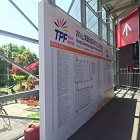
The Shanghai International Digital Textile Printing Summit 2016 (TPF) that took place from April 17 to 19 at the Shanghai New International Expo Centre, explored the wealth of opportunities for Chinese printers the rapidly expanding global market. The strengths, weaknesses and development trends of Chinese market is quantified and benchmarked against both competing Asian production centres and the leading western economies. TPF 2016 attracted over 200 exhibitors and 12,000 visitors including textile printing and dyeing factories, end-users (apparel, fabric manufacturers, leather, home textile and ceramic/glass), clothing brands and designers. The visitors were from 49 countries and regions including China, India, Korea, Turkey, Southeast Asian, Japan, Italy, Russia.
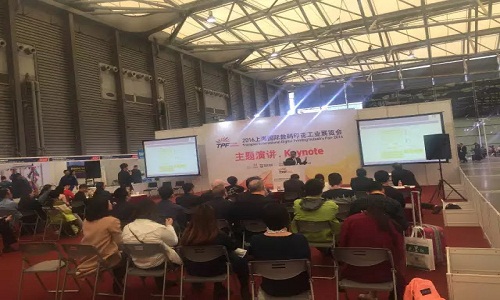
Delegates learnt about the latest in both Western and Chinese technology, gained vital information to help in making technology choices, and learnt how to get the best quality and performance from their investments in digital textile applications. The event also witnessed perspectives from designers and other specifiers on the unique creative and supply chain advantages of digital printing over traditional analogue methods.
Digital printing opportunities
The event explored the potential opportunities of Chinese digital printing enterprises in today's rapid expansion of the global market. Forum site was a comprehensive analysis of the advantages and crisis of the market for digital printing in China, and the future of Chinese market development trend, research market for digital printing in China compared with industry leading parts of Asia and even the competitiveness of the industry leading western markets.
The event was organised in co-operation with the digital think-tank WTIN, a leading British B2B media company. WTIN joined the TPF, the day before the Shanghai International Digital Printing Industry Exhibition, planning ‘2016 Shanghai international textile fabric digital printing industry forum,’ to discuss the opportunities and challenges of the global textile digital printing industry.
Trends and analysis
Academicians and industry leaders analyzed the developments and trends of digital printing industry and showcase cutting-edge technologies. The delegates learnt the latest market trends, how to break the bottleneck of industrial development, demands of downstream applications, technology innovations from the conferences and seminars organised during the event.
Bangladesh has got a mobile testing laboratory for waste water and sludge generated by effluent treatment plants of readymade garment factories. The laboratory is equipped with sampling and measuring instruments and accessories and offers on-the-spot testing and sampling services for washing, dyeing and finishing plants in the readymade garment sector.
With the help of this testing van, waste water can be controlled, thus providing a scientific basis to further improve water quality. There are small garment factories in Bangladesh which might have effluent treatment plants in operation, but may not have the instruments to constantly control the treated water. This mobile testing service can specifically serve smaller and medium-sized factories so that they can ensure their waste water does not pollute the environment.
Thus the mobile laboratory is one step toward a more sustainable garment industry in Bangladesh, from which businesses, environment and people can benefit. The lab has a technician and a waste water expert team and will enable clients to take advantage of quality services at an affordable price. The testing facility provides on-site sampling, testing, calibration of factory meters, and monitoring of environmental parameters.
This international standard service is available to all textile factories in Bangladesh.
The Bangladesh government will not extend the stay of Accord and Alliance beyond the expiry of their current tenure in June 2018, said Commerce Minister Tofail Ahmed. According to the minister, the Accord and the Alliance are not present anywhere else in the world. They will not be here in Bangladesh after 2018. The Accord and Alliance are legally binding agreements signed by a total of 228 foreign retailers in the aftermath of the Rana Plaza collapse in 2013 to fix the electrical, fire and structural faults in the garment factories from which they source.
The tenures of Accord, a platform of 200 Europe-based retailers, and Alliance, another platform of 28 North American retailers, will come to an end in June 2018. After their departure, the proposed remediation coordination cell will monitor the safety progress of the structures, said a senior official of the labour and employment ministry. The two platforms have inspected a total of 2,198 factories so far, according to Ahmed.
ITM 2016 International Textile Machinery Exhibition and concurrent HIGHTEX 2016 International Technical Textile and Nonwoven Trade Fair to be held at Tuyap Fair Convention and Congress Center on June 1-4 in Istanbul, are expected to attract 1,200 exhibitors and more than 60,000 visitors from 72 countries.
At ITM 2016, latest technologies nationally developed in textile machinery industry will be debuted. ITM and HIGHTEX fairs are considered to be the largest gathering for textile technologies, which Turkey and the region have hosted so far.
Held in Istanbul, one of the world’s most strategic locations in geographical terms, will be a meeting point for all the industry representatives. Istanbul, the West’s doors to the East and the East’s doors to the West has a position as the centre of textile industry. ITM 2016 where brands intending to become one of the actors in the world market will exhibit its innovative technology investments and new products will be the address for textile industry in 2016.
HIGHTEX 2016, the 6th International Technical Textile and Nonwoven Trade Fair, the first and only event in its field, raw materials for technical textiles, intermediary and final products and production technologies will be seen together. The fact that HIGHTEX 2016, the largest gather for technical textiles in the Middle East and Eastern Europe, will be concurrently held with ITM 2016 will create a highly positive and efficient synergy.
Warnings from apparel maker Perry Ellis and other companies suggest teens and other shoppers are still ho-hum about spending on fashion and that investors should be cautious, especially about mall-dependent retailers.
Teens are spending more time on devices and less at the mall; consumers are increasingly willing to buy clothes online, often from internet-only stores, and consumers in general have shifted their priorities away from clothing and toward technology and home improvement. Wall Street analysts on average expect several months of falling or barely-growing revenues from Gap, American Eagle Outfitters and other mall mainstays. They see a glimmer of hope at year end, with shoppers potentially buying more winter attire than in 2015, when the weather was mild in parts of the United States.
With the propagation of privately held fashion ecommerce stores like Everlane and ShopBop competing with Amazon, as well as more customer-friendly shipping policies from traditional retailers, clothing and accessories outsold computer gear online for the first time last year, reaching $17.2 billion in the fourth quarter, according to comScore.
Shares of apparel retailers have performed poorly. Aeropostale has lost 93 per cent in the past year and recently warned of potential liquidity problems. Shares of L Brands, the owner of Victoria Secrets, are down 12 per cent so far in 2016, missing out on much of a stock market rally since mid-February.

